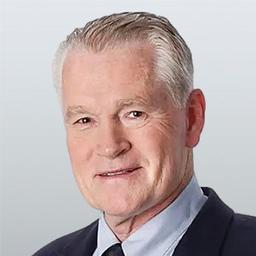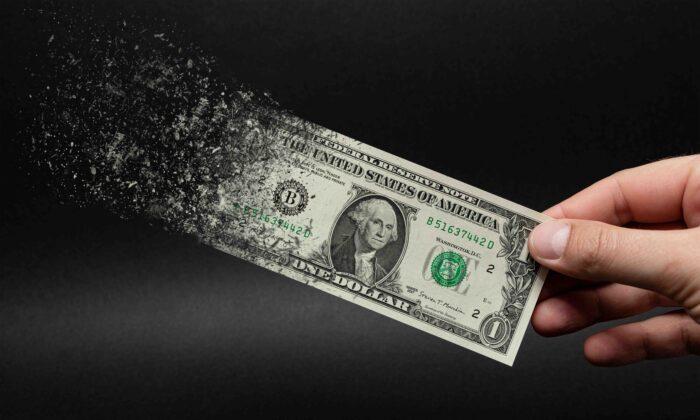“Come on, Man. Give us a break! Where did you stash all the swag?” — R.C. Moores
One of the least debatable features of the COVID-19 pandemic is that the progress and evolution of the disease have been little understood. And the understanding we think we have achieved has been poorly incorporated in strategies to combat the pandemic.
This was starkly underlined by a recent story in The Washington Post, which reports that the Biden White House will soon ask Congress for even more money to battle the COVID-19 pandemic. Evidently, $5.4 trillion wasn’t enough.
That $5.4 trillion is the total appropriated in six separate pieces of legislation over the past 24 months, all of which purported to combat the pandemic.
You should have known in advance that six pieces of legislation, appropriating an average of $900 billion each, would surely fall short of satisfying the need to patch the wounds opened by the pandemic. It is always thus.
You can’t expect politics to provide comprehensive solutions to life challenges. I am reminded of a brilliant speech, “The Human Crisis,” delivered at Colombia University in March 1946, by French philosopher and Nobel-prize-winning novelist Albert Camus. He said that “politics is not a catechism,” a morsel of wisdom even older than I am.
As you may know, Camus was the author of a 1947 novel, “The Plague” (French: “La Peste”). It tells the story of an epidemic narrated by Dr. Bernard Rieux. Rieux treats the first plague victim and first uses the word “plague” to describe the disease.
Note that Camus was well placed to understand an epidemic or pandemic because he suffered from tuberculosis throughout his life—a disease that killed him at the young age of 46.
His character, Rieux, encourages authorities to take immediate measures to halt the spread of the virus. However, like everyone else, he first believes that the threat the community confronts is imaginary. He is unsettled, but is unaware of the seriousness of the issue. Within a short period of time, he realizes what is at risk. He informs the authorities that the pandemic will kill half of the town’s 200,000 residents within a few months unless fast action is taken.
During the outbreak, Rieux is in charge of an auxiliary hospital in the Algerian city of Oran (then under French colonial rule), where he spends excessive hours helping victims. He injects serum and lances the abscesses, but he is limited in his treatment choices.
His duties weigh heavily upon him. He never gets home until late. He must detach himself from his inherent empathy for the victims; otherwise, he would not be able to go on.
It’s extremely difficult for him to visit a victim at their home since he knows he must call an ambulance and get the patient removed from the family residence. Often, the relatives plead with him not to do so since they know they may never see the person again.
Thousands of rats start to die in the streets of Oran, first unseen by the residents. Soon after, hysteria breaks out, prompting the local media to publish a story about the event. Authorities order the gathering and burning of the rats in response to public pressure, unknowing that the collection itself was the impetus for spreading the bubonic plague.
Rieux, the main character, lives well in an apartment building until the building’s concierge, M. Michel, who was also a confidante, dies from a fever. Dr. Rieux seeks advice from Dr. Castel, a trusted colleague, about the illness.
Lockdown
Authorities, including the regional governor, are slow to accept that the situation is serious and quibble over the appropriate action to take. Initially, the governor believes that talk of plague is a false alarm. Still, on the advice of his medical association, he authorizes limited measures to combat it. He tries to avoid responsibility when they don’t work, saying he would seek instruction from the government. Then, he takes responsibility for tightening the regulations relating to the plague and issues the order to close the town. Official notifications imposing control measures are posted; however, the chosen wording downplays the situation’s seriousness. Shades of COVID, a “special ward” is opened at the hospital, but its 80 beds are filled within three days.As the death toll rises, more desperate measures are taken. These will be familiar to you from the COVID experience. Homes are quarantined, and corpses and graves are closely monitored. Although a supply of plague serum has finally arrived, there is only enough to treat the current patients, and the country’s emergency stocks are exhausted. When the daily death toll reaches 30, the town is quarantined, and a plague epidemic is announced.
Much of the plot of “The Plague” unfolds in terms that are all-too-familiar in the wake of the COVID pandemic. By the end of the novel, the narrator identifies himself as Dr. Rieux. He reflects on the epidemic and summarizes the moral of the story.
“What we discover in the midst of plagues: there is more to appreciate in mankind than to dislike.”
The thing that separates Camus’s 1940s novel from the COVID pandemic is that there was no question of the government lavishing trillions of French francs on plague recovery. In 1947, there were 119 French francs to the dollar. The exchange rate was soon to be devalued because French gold reserves had plunged to $544 million in August 1947 from $1.779 billion in 1939.
Meanwhile, foreign exchange reserves held by the Central Bank of France had declined to just 3 million francs in August 1947 from 821 million francs at the end of 1938—a drop of 99.7 percent. Little wonder that the French franc was devalued in 1948 to 215 to the dollar.
So long as monetary emissions were limited by the available gold and reserve backing, the option of spending trillions to remedy economic shortfalls caused by the “plague” wasn’t on the table.
I can’t help but suspect that U.S. COVID spending might have been more disciplined if the gold standard still limited monetary emissions.
Recently, as Americans waited in hours-long lines for COVID tests, inflation hit 40-year highs, the White House appeared unprepared to deal with the Omicron surge, notwithstanding that the $5.4 trillion in COVID relief spending exceeded the cost of fighting World War II (in today’s dollars) by about 40 percent.
Little wonder that grumpy old men have demanded to know: Where did all the money go?





